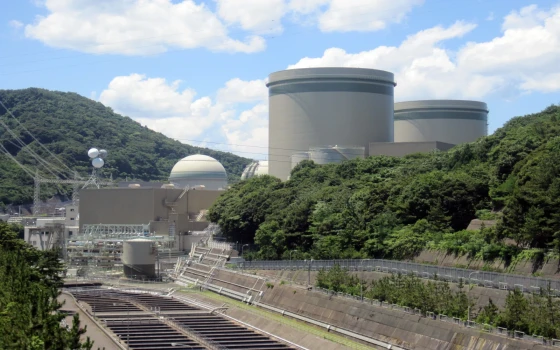
To eliminate nuclear power for electricity generation, Belgium's fourth reactor is shut down, the fifth will close next month, and the last two will be completed within ten years.

- Europe and Arabs
- Tuesday , 30 September 2025 7:29 AM GMT
Brussels: Europe and the Arabs
Tihang 1 is the fourth Belgian nuclear reactor to be decommissioned, following the final shutdown of Dole 3, Tihang 2, and Dole 1. Dole 2 will follow at the end of November. The two remaining reactors – Dole 4 and Tihang 3 – will be allowed to operate for another 10 years, until 2035. This was reported by Belgian media on Tuesday, including the daily newspaper Nieuwsblad, which indicated that as of Wednesday, October 1, the reactor will cease operations and be shut down.
Construction of the reactor on the banks of the Meuse River near Huy in Liège began in 1969. It first generated electricity in 1975. The reactor – 50% owned by Engie and 50% by EDF Belgium – was originally scheduled to shut down in 2015, but to ensure security of supply, it was allowed to remain open until 2025. Tihang currently has a capacity of 962 megawatts.
Nuclear waste may be a nuisance, but it provides the residents of Dessel with funds for social projects. This will end (definitively) today. Late at night, control room operators will shut down the reactor and disconnect it from the high-voltage grid.
From then on, the shutdown phase will begin, preparing for the actual decommissioning process. The reactor will be emptied and the fuel cooled, later to be transferred to a temporary storage facility. Chemical cleaning of the main circuit will then be carried out, among other things. All of this work will take years to complete.
The decommissioning phase is not scheduled to begin before 2028 and will continue until 2040. This will include dismantling the reactor vessel.
Discussions are underway regarding an extension.
If it were up to the government, all this work would have to wait. It had hoped to keep the reactor open for a longer period and had asked Engie not to undertake any irreversible work. Discussions regarding this extension are ongoing.
The question is: how realistic is continued operation? Engie itself has repeatedly stated that it is not interested in operating any nuclear power plants other than Dowell 4 and Taihang 3. Keeping the Taihang 1 reactor open for a longer period would be extremely costly due to the necessary upgrades, and the reactor would also have to undergo a ten-year safety review.
With the abundance of nuclear power, climate neutrality is the most feasible option: The Federal Planning Office is studying three scenarios.
With 8 GW of new nuclear power plants and 8 GW of offshore wind power, electricity production would be the most cost-effective.
Questions have also been raised about whether there is enough space on the Liège region's electricity grid, especially after the construction of two gas-fired power plants in the region. Elia, the operator of high-voltage power plants, has conducted an impact analysis on this matter. The study shows that extending the grid from 2027 onwards is technically feasible, but would lead to grid congestion pending structural reinforcements. The study suggests that this congestion could be resolved through market liberalization measures. These measures involve costs, "although these costs may be relative given the broader impact of phasing out or extending nuclear power," the study states.












No Comments Found